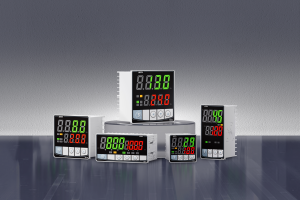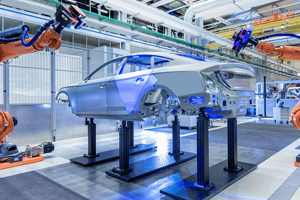How to Construct a PID Controller for Brewing
Learn how to build a PID controller for brewing with our comprehensive guide. Understand the components, step-by-step assembly instructions, and common challenges to achieve precise temperature control in your brewing process.
1. Introduction
PID controllers - or Proportional-Integral-Derivative controllers - are indispensable tools in many industrial settings, including brewing. Precise temperature regulation is vital in order to guarantee consistent quality and flavor of final products; thus, this article offers an in-depth tutorial on building PID controllers specifically for this use, covering components necessary, assembly steps, potential obstacles encountered as well as common problems that need be overcome when building one for this industry.
2. Understanding PID Controllers
PID stands for Proportional, Integral and Derivative controller. This mechanism utilizes feedback control loop to maintain an desired setpoint using proportional (P), integral (I), and derivative control (D).
*Proportional (P): This component generates an output value that is proportional to the current error value; proportional gain determines our reaction to any current errors.
* Integral (I): This component addresses past errors by gradually amassing and correcting them over time. For instances in which errors have persisted for extended periods, integral will help correct it over time by adding and amassing errors over time.
* Derivative (D): The derivative component predicts future errors based on their rate of change, helping dampen system response while also decreasing overshoot and improving stability.
PID controllers offer more precise and stable temperature regulation - essential when it comes to brewing! PIDs offer this functionality through multiple-zone temperature regulation capabilities.
3. Components Required to Build a PID Controller
To build your PID controller for brewing, the following items will be necessary.
* PID Controller Unit: As this component acts as the brains of your system, select one designed specifically for brewing applications with features like auto-tuning and digital displays.
* Temperature Sensor: Common types include thermocouples and Resistance Temperature Detectors (RTDs). Select one with high accuracy that works well with your PID controller.
* Solid State Relay (SSR): SSRs serve as switches that control heating elements, making them preferable over mechanical relays due to their reliability and fast switching speeds.
* Heating Element: When selecting your heating element for use in your brewing setup, be sure to select one which meets the power needs. Popular options for electric immersion heaters.
* Additional Components: These components consist of an enclosure for housing the components, wiring, connectors and safety devices such as fuses or circuit breakers.
Step 1- Planning and Design* Before building a PID Controller, first identify all requirements and specifications necessary for your brewing setup, such as volume of liquid to be heated as well as desired temperature range.
* Drawing out a wiring diagram will enable you to visualize how components connect, which can aid the assembly process and help ensure success.
4. Step Two: Assembling Components
* To assemble all of your components, mount both your PID controller and SSR securely within their respective enclosures to allow easy wiring access.
* To accurately monitor liquid temperature, install your temperature sensor near a heating element. This should provide accurate readings.
* Connect the heating element to an SSR while making sure its ratings meet those of both your power source and brewing setup.
Step 3: Wiring and ConnectionsWIRE the components according to your wiring diagram using appropriate gauge wire and check that all connections are secure.
* Employ appropriate insulation and safety measures in order to eliminate electrical hazards, including using heat-resistant wiring and securing all connections.
Step 4: Programming the PID Controller
* Set your preferred temperature using the PID controller - this should serve as your ideal target temperature during brewing processes.
* You should set up the PID parameters (P, I and D values) based on the unique needs of your brewery setup. Many PID controllers come equipped with auto-tuning features which make this task simpler.
Step 5: Testing and Calibration * Conduct an initial check to make sure all components of your system are operating as intended, monitoring temperature readings as well as heating element response time.
* To achieve optimal performance with PID settings, fine tune them for optimal results by making necessary changes to P, I and D values in order to minimize overshoot while maintaining stable temperature control.
Common Challenges and Troubleshooting with Brewing PID Controllers Tuning PID controllers for brewing can present several difficulties, so here are some commonly-experienced issues and their possible resolutions:
* Overshoot and Oscillations of Temperature: If temperature overshoots the setpoint or oscillates erratically, adjust both proportional and integral gains accordingly to stabilize your system - decreasing proportional gain may help.
* Precise Temperature Readings: To ensure accurate temperature readings, ensure the temperature sensor is calibrated and installed appropriately; inaccurate readings can result in poor temperature regulation and management.
* Heating Element or SSR Issues: If a heating element or SSR is misbehaving, verify all wiring connections as well as replace any defective parts to ensure reliable performance.
Case Studies of Cases under study can be seen here
Example 1: Establishing a PID Controller in a Homebrew Setup
A homebrewing setup employed a PID controller to precisely regulate the temperature in its mash tun. To accomplish this goal, proportional gain was set so as to achieve stable temperature responses; integral gain was adjusted so as to eliminate steady-state errors; while derivative gain dampeners oscillations. As a result of such careful calibration efforts, precise temperature regulation resulted in consistent and improved beer brew quality and consistency.
Example 2: Upgrading an Existing Brewing System with a PID Controller
An existing brewing system was upgraded by adding a PID controller in order to improve temperature regulation, replacing its traditional thermostat with more accurate and stable regulation from a PID. Following testing and calibration, improved brewing efficiency and product quality resulted.
5. Conclusion
Its Establishing a PID controller for brewing involves understanding its components and their functions, assembling its system and fine-tuning its settings to achieve optimal performance. By following these steps and addressing common obstacles along the way, precise temperature control in your brewing process can be attained. Regular maintenance and fine tuning must occur to keep this PID working at peak levels for peak results.
- How to Design a PID Controller in MATLAB-Step-by-Step Guide
- How to Tune a PID Controller Manually: A Comprehensive Guide























